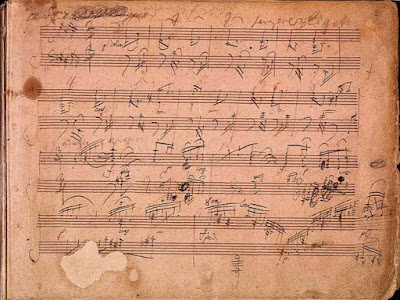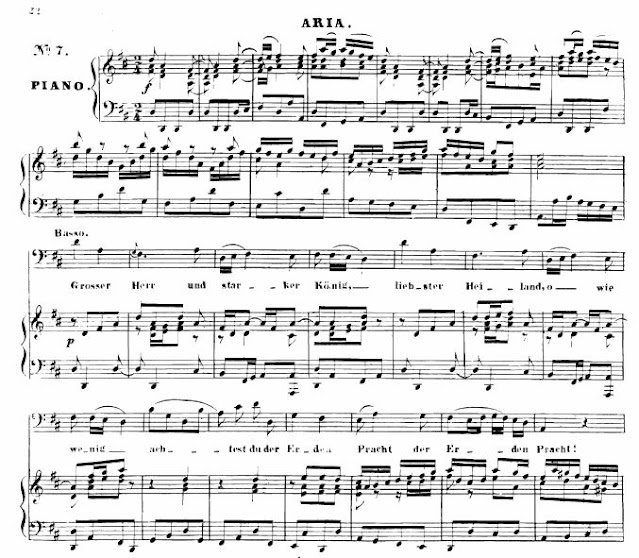Beethoven's Piano Sonata No. 30, Op. 109
 |
| The autograph of the first page of Op. 109 |
I'll never forget hearing Kathy Geralds, then a senior at William & Mary, play the first movement of this sonata at a noon recital at the beginning of my freshman year. Immediately afterwards, I was telling an upperclassman about how thrilling I found the sonata and when he asked which one she had played, I said, "Beethoven's 109th Sonata." He quickly clarified the difference for me between opus number and sonata number. It's a shame, though, that Ludwig didn't write 109 of them - this 250th jubilee year would have to last two years to fit them all in, but I think we've already had enough of 2020.
There's the playful first movement that refuses to allow the casual listener to comprehend it, contrasted by the short in-your-face second movement that only the greatest masters can perform transparently, and the ethereal, heavenly last movement of variations - something for everyone!
Luckily, this piece is performed quite often. The last three "late" Beethoven sonatas (Op. 109, 110, 111 - oh, 111!) form a triumvirate that is unequaled in the piano repertoire, which is why so many musicians aim to learn and perform them. Lucky us!
While I was living in Freiburg in the 1990s I had a very good friend who was learning the E-major Sonata. She often played it for me and, since I loved it and cared about it, she listened to what I had to say about her interpretation. Lucky us!
Whereas I've tried to master most of my favorite piano pieces over the decades, this is one which I've left to the pros. It is holy for me and I guess I've never gotten high enough to try to walk on l'eau with it so...lucky me!
Share your favorite recordings of this piece with me. I'm partial to those by Mieczyslaw Horszowski, Kempff, Serkin and this one by Andras Schiff.




Comments
Post a Comment